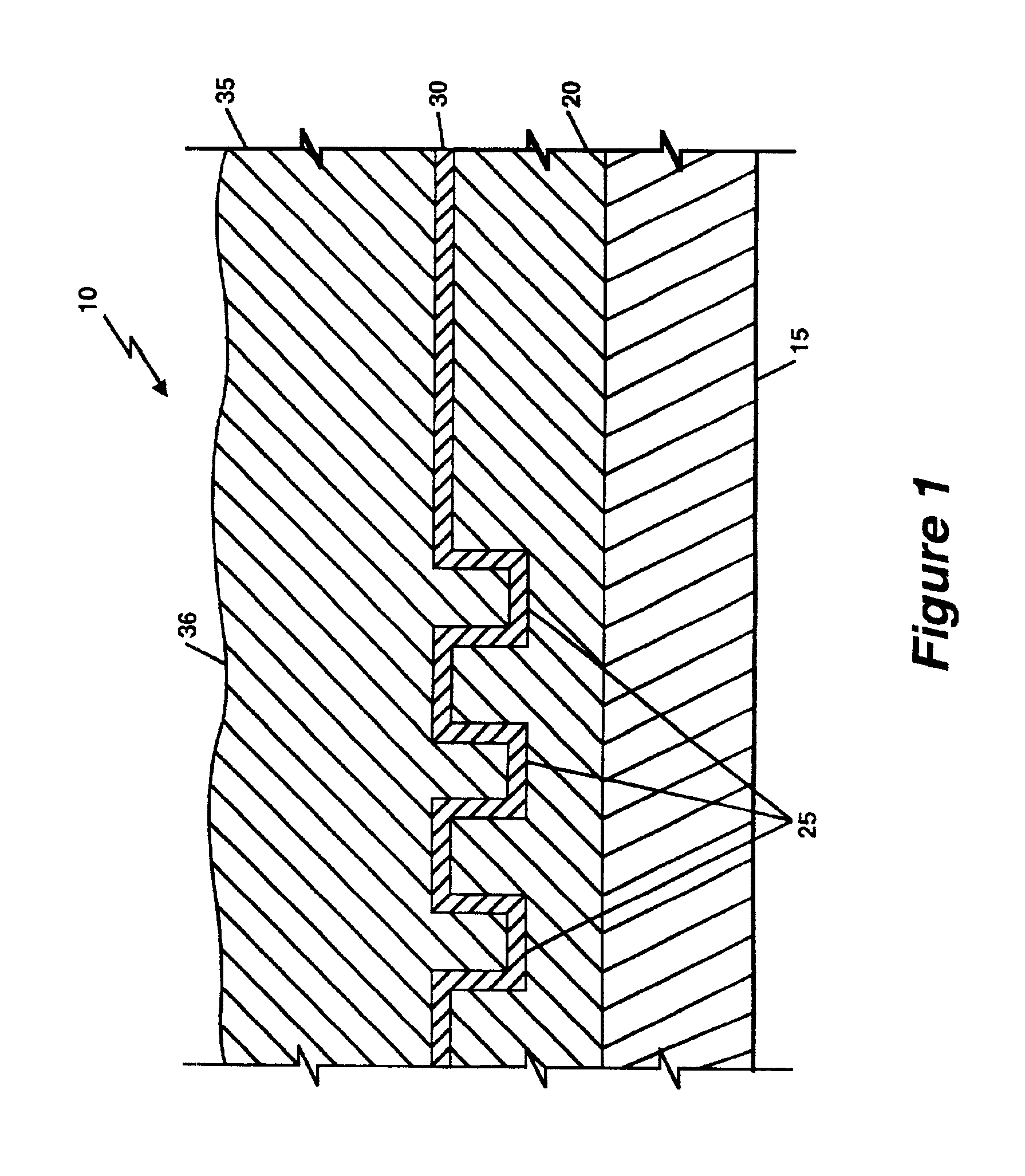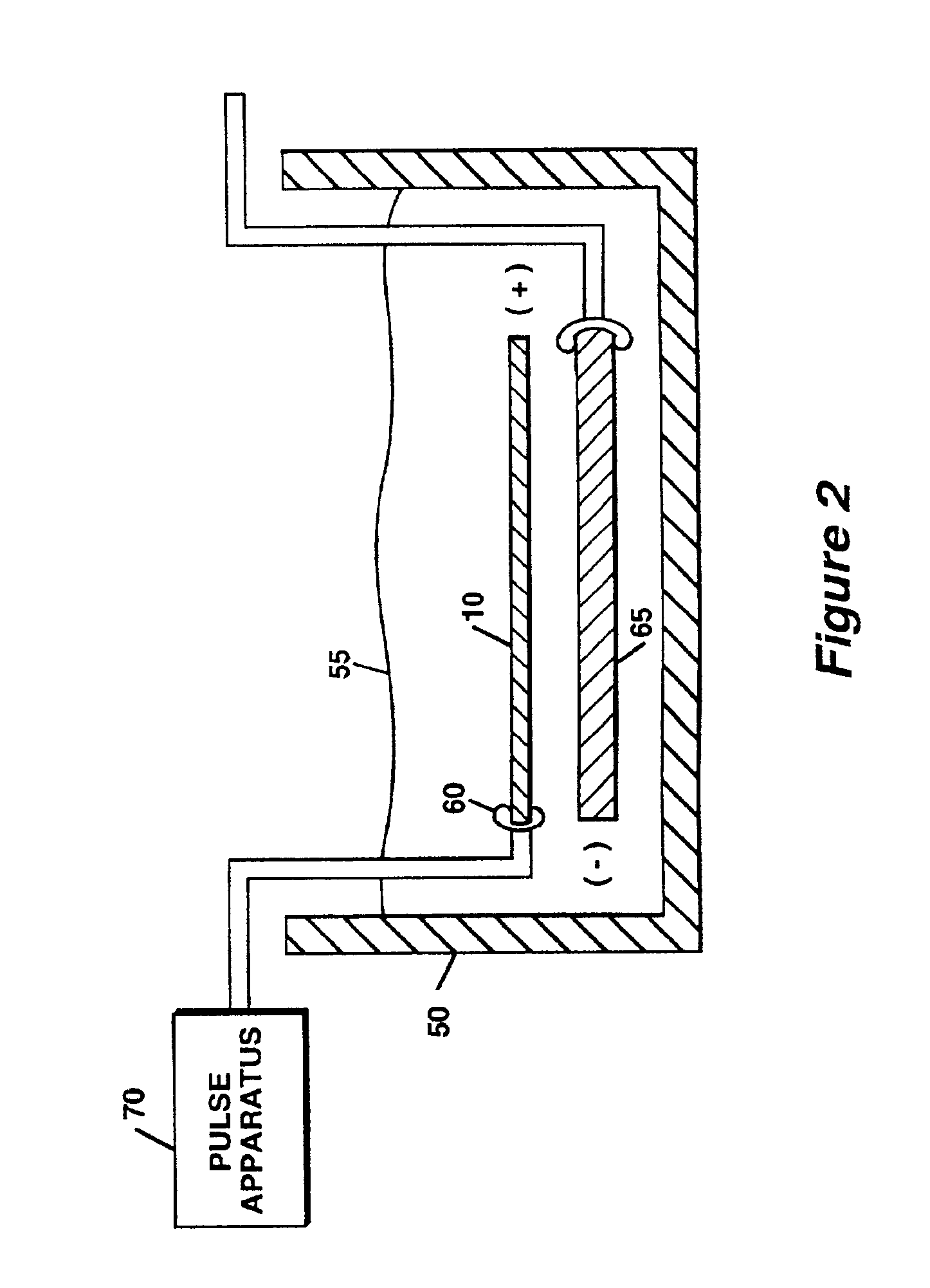Advanced electrolytic polish (AEP) assisted metal wafer planarization method and apparatus
a technology of electrolytic polishing and metal wafers, applied in the direction of grinding/polishing apparatus, grinding machines, manufacturing tools, etc., can solve the problems of reducing the the non-planar outer surface presents a problem for the integrated circuit manufacturer, and the difficulty in achieving a high degree of surface uniformity or planarity. , to achieve the effect of reducing dishing and erosion, good quality and high throughpu
- Summary
- Abstract
- Description
- Claims
- Application Information
AI Technical Summary
Benefits of technology
Problems solved by technology
Method used
Image
Examples
Embodiment Construction
[0024]FIG. 1 shows a cross-sectional view of a conductive substrate 10 having deposited layers such as those layers formed during the manufacture of semiconductors. The figure is not to scale. An interlayer dielectric 20, e.g. silicon oxide, is formed overlying a metal wafer 15. A plurality of indentations, also referred to as openings 25, are formed in a designated area at the left of the interlayer dielectric 20 in which a dense array of conductive lines are to be formed bordering an open field shown on the right of the interlayer dielectric 20. A barrier layer 30, e.g. tantalum, tantalum nitride, titanium or titanium nitride, is deposited on the layer of interlayer dielectric 20, the barrier layer 30 also lining the plurality of openings 25. A conductive layer 35, e.g. copper, is then deposited over the barrier layer 30. The successive layers forms an uneven topography 36 over the substrate which requires planarization before further processing. Also, successive process steps req...
PUM
| Property | Measurement | Unit |
|---|---|---|
| current density | aaaaa | aaaaa |
| temperature | aaaaa | aaaaa |
| temperature | aaaaa | aaaaa |
Abstract
Description
Claims
Application Information
 Login to View More
Login to View More - R&D
- Intellectual Property
- Life Sciences
- Materials
- Tech Scout
- Unparalleled Data Quality
- Higher Quality Content
- 60% Fewer Hallucinations
Browse by: Latest US Patents, China's latest patents, Technical Efficacy Thesaurus, Application Domain, Technology Topic, Popular Technical Reports.
© 2025 PatSnap. All rights reserved.Legal|Privacy policy|Modern Slavery Act Transparency Statement|Sitemap|About US| Contact US: help@patsnap.com



